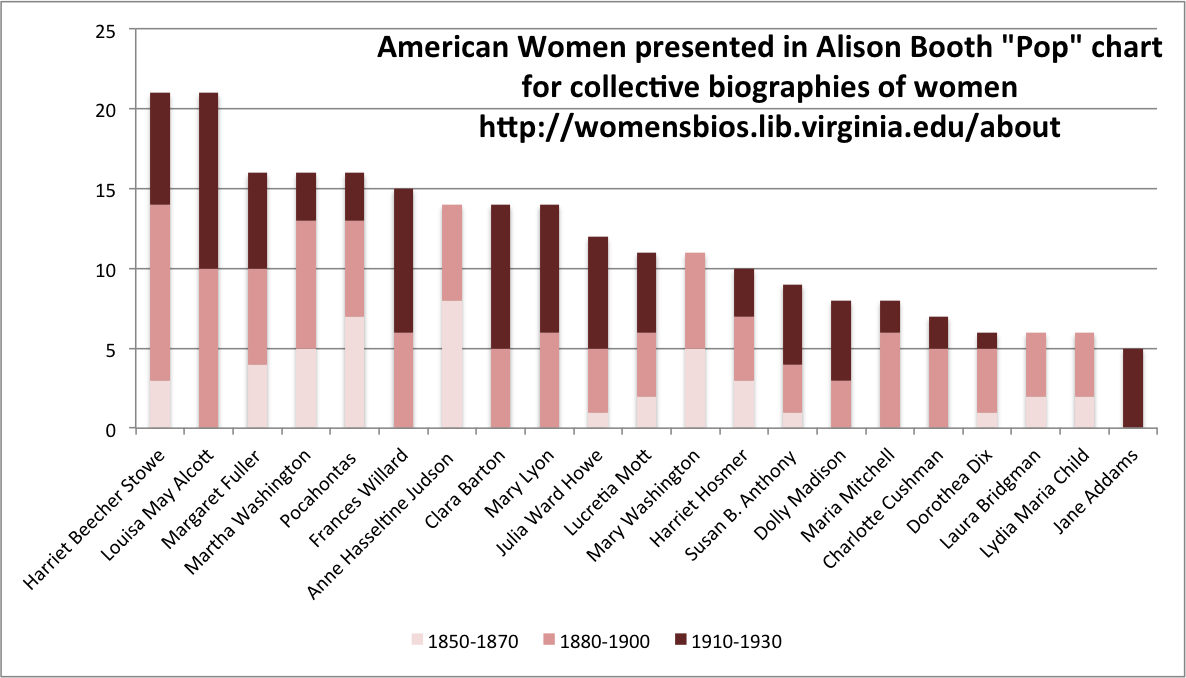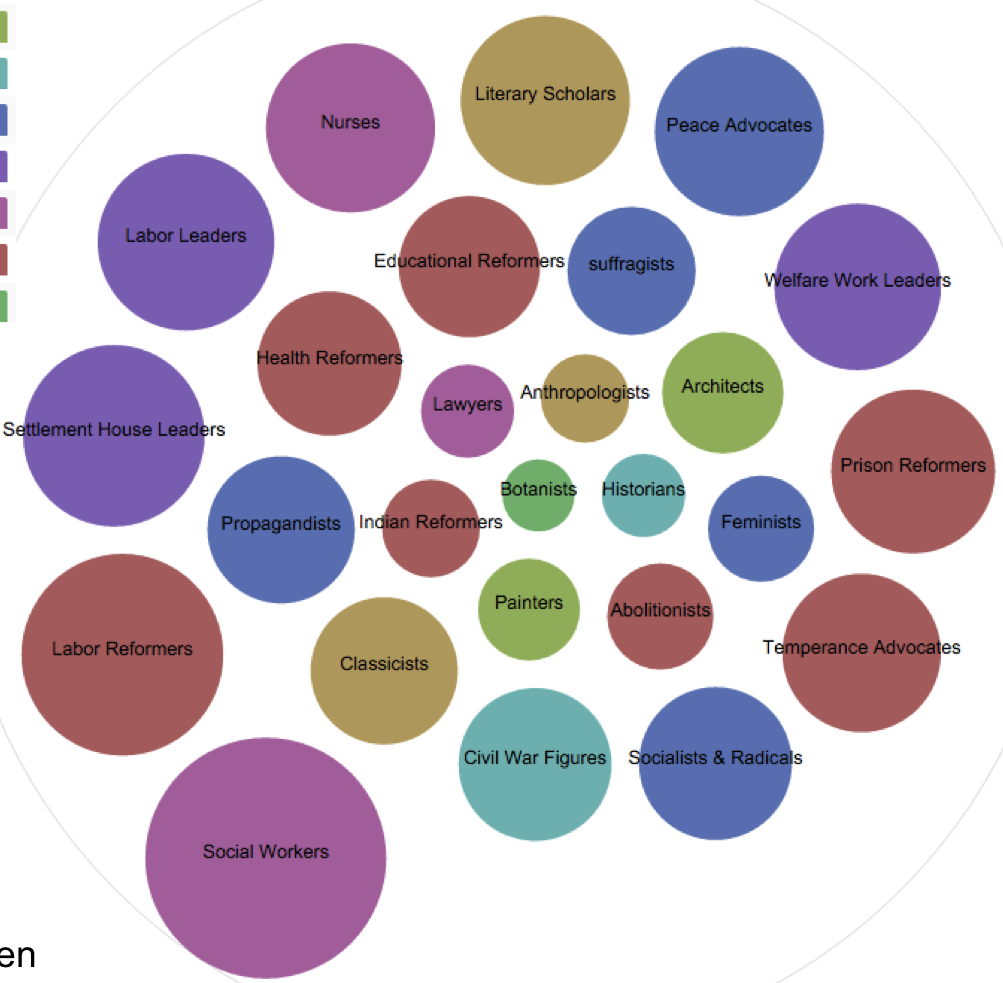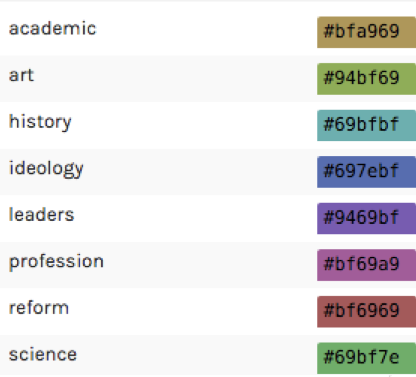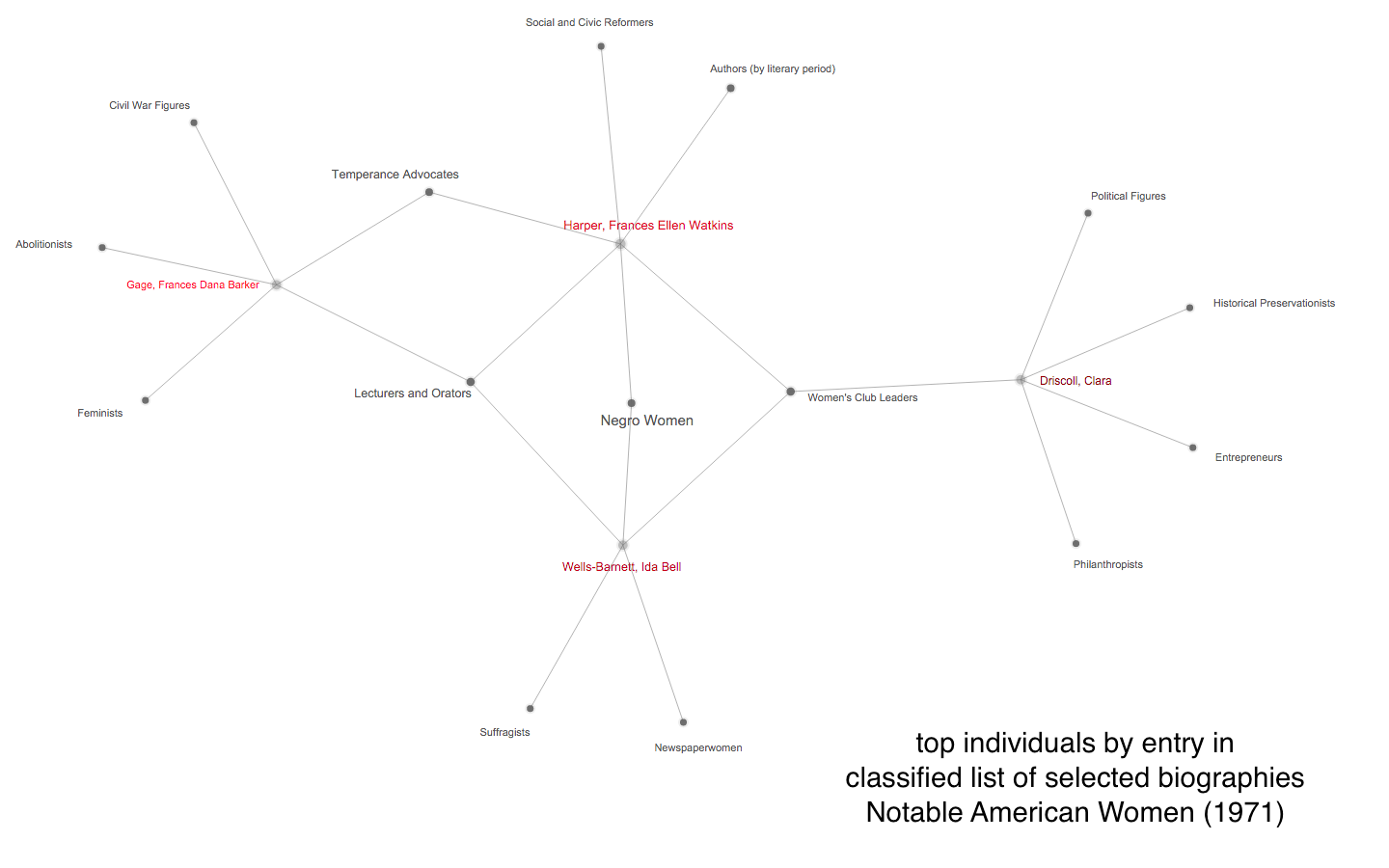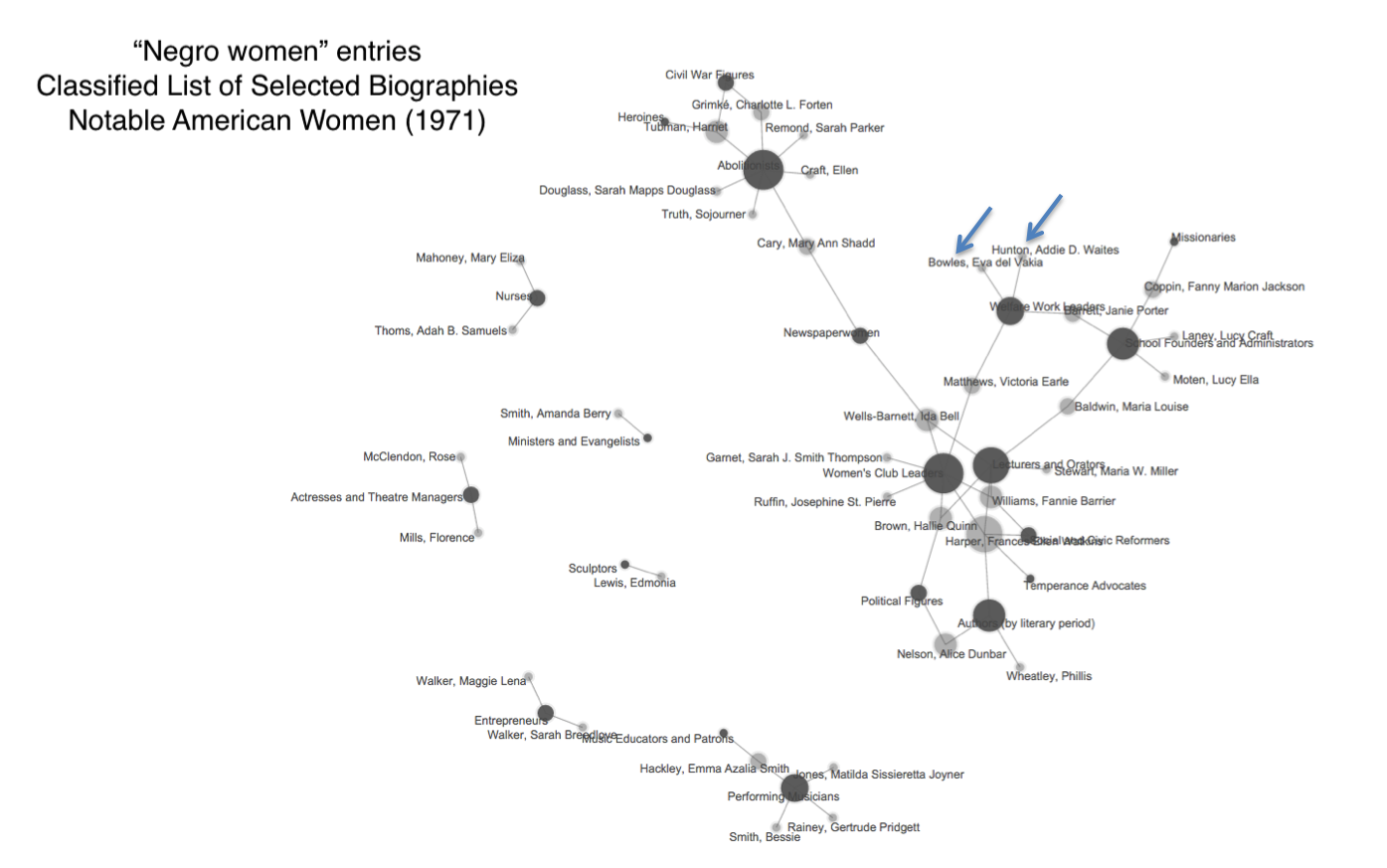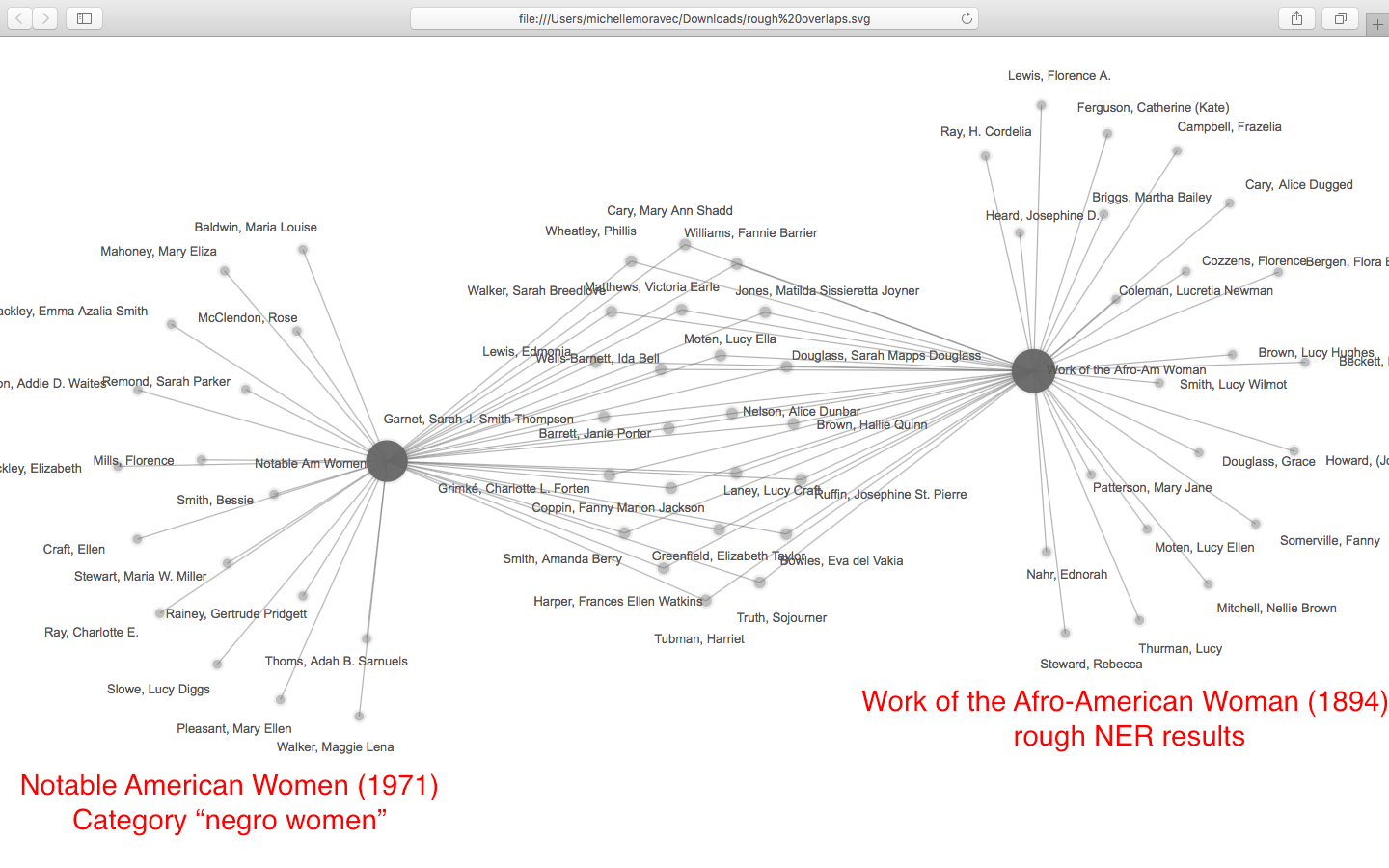Peter E. Gordon
Just a few months ago, in mid-January, 2016, the online magazine Politico published a report with the title: “One Weird Trait that Predicts Whether You’re a Trump Supporter.”
If I asked you what most defines Donald Trump supporters, what would you say? They’re white? They’re poor? They’re uneducated? You’d be wrong. In fact, I’ve found a single statistically significant variable predicts whether a voter supports Trump—and it’s not race, income or education levels: It’s authoritarianism. That’s right, Trump’s electoral strength—and his staying power—have been buoyed, above all, by Americans with authoritarian inclinations. And because of the prevalence of authoritarians in the American electorate, among Democrats as well as Republicans, it’s very possible that Trump’s fan base will continue to grow. (MacWilliams 2016)
The author of this report, Matthew MacWilliams, is the founder of MacWilliams Sanders, a political communications firm, and he is also a doctoral candidate in political science at the University of Massachusetts, Amherst, where he is writing his dissertation about authoritarianism. Having conducted a national poll of 1,800 registered voters of varying political allegiance, MacWilliams reports that “education, income, gender, age, ideology and religiosity had no significant bearing on a Republican voter’s preferred candidate.” Edging out even “fear of terrorism,” one statistical variable rose to the top in McWilliams’s study as the distinguishing mark of a Trump supporter: authoritarianism, which, McWilliams noted, was “one of the most widely studied ideas” in the social sciences. Authoritarians, he explains, are inclined to “obey.” They “rally to and follow strong leaders. And they respond aggressively to outsiders, especially when they feel threatened.”
Political pollsters have missed this key component of Trump’s support because they simply don’t include questions about authoritarianism in their polls. In addition to the typical battery of demographic, horse race, thermometer-scale and policy questions, my poll asked a set of four simple survey questions that political scientists have employed since 1992 to measure inclination toward authoritarianism. These questions pertain to child-rearing: whether it is more important for the voter to have a child who is respectful or independent; obedient or self-reliant; well-behaved or considerate; and well-mannered or curious. Respondents who pick the first option in each of these questions are strongly authoritarian. Based on these questions, Trump was the only candidate—Republican or Democrat—whose support among authoritarians was statistically significant. It is time for those who would appeal to our better angels to take his insurgency seriously and stop dismissing his supporters as a small band of the dispossessed. Trump support is firmly rooted in American authoritarianism and, once awakened, it is a force to be reckoned with. That means it’s also time for political pollsters to take authoritarianism seriously and begin measuring it in their polls. (MacWilliams 2016)
Although the tone of political urgency in the above report may invite skepticism, we should still try to hear its distant echo of earlier research in social psychology spanning more than half a century. To grasp the implications of such research, it is crucial to recall the original aims of the landmark study that was published in 1950 as The Authoritarian Personality (Adorno et al. 1982 [1950])1. In what follows, I want to examine some of those aims, focusing on its premises and its possible missteps. To do so I also want to explore Adorno’s specific contributions, in part by taking the time to revisit his own written remarks, especially those which ultimately did not find their way into the published version of the study. My hope is that by reading Adorno again, we might discern how Trump at once instantiates the category of the “authoritarian personality” but also challenges its meaning. The AP study, I will suggest, contained two distinct lines of argument. The first of these arguments qualified as the “official” discovery of the research program, and its basic message is the one MacWilliams identified in the passages quoted above, namely, it claimed to have identified a new “psychological type.” The second argument was rather more sobering and radical in its implications: it suggested that the authoritarian personality signified not merely a type but rather an emergent and generalized feature of modern society as such.
Historical and Theoretical Premises
At the time Adorno and Horkheimer were first approached by the American Jewish Committee to conduct research on anti-Semitism, the two men had just completed the initial draft of Dialectic of Enlightenment, the so-called “philosophical fragments,” in which Adorno and Horkheimer laid out a grandiose genealogy of instrumental reason spanning all of human history, from ancient myth to modern fascism. Composed in a highly abstract idiom with literary readings of Homer’s Odyssey and de Sade’s Juliette, the Dialectic remained at a great remove from empirical commentary except perhaps for its damning chapter that examined the “culture industry” as the culminating phase in the liquidation of critical consciousness in modern society. (Adorno and Horkheimer 2007: 94-136) It is all the more ironic that Adorno’s biographer Stefan Muller-Doohm suggests that we might read The Authoritarian Personality as “a continuation of the Dialectic of Enlightenment by other means.” (Müller-Doohm 2009: 292) It is also worth noting that, through this study, both Adorno and Horkheimer came to a deepened admiration for the empiricist methods of the American social sciences. The truth of the matter, however, is that Adorno’s collaboration with American social scientists exposed lines of tension that were never fully resolved.
In 1945 when the project was just getting off the ground, Adorno was living in Los Angeles, and he would travel every two weeks up to San Francisco to convene with his colleagues. These included Else-Frenkel Brunswik, a Polish-born Else refugee from Nazi Germany who had trained in Vienna as a psychoanalyst and served as a research associate in the Berkeley study; R. Nevitt Sanford, a Berkeley Professor of psychology, and finally Daniel Levinson, at that time a research student at Berkeley and later a professor of psychology at Yale. Especially for those who harbored personal fears regarding the possible emergence of anti-Semitism in the United States, the support from the AJC came at a moment of deep anxiety, and we should not be surprised that these researchers brought to their task a twofold commitment to social scientific precision and a passionate belief in the necessity of defending the values of American democracy. Animating the study was the conviction that it should be possible to measure not just actively fascist commitment but fascism as a latent or explicit trait of consciousness. On the first page of the introduction, the authors explained:
The research to be reported in this volume was guided by the following major hypothesis: that the political, economic, and social convictions of an individual often form a broad and coherent pattern, as if bound together by a “mentality” or “spirit,” and that this pattern is an expression of deep-lying trends in his personality. The major concern was with the potentially fascistic individual, one whose structure is such as to render him particular susceptible to anti-democratic propaganda. […] there was no difficulty in finding subjects whose outlook was such as to indicate that they would readily accept fascism if it should become a strong or respectable social movement. (Adorno et al. 1982 [1950]: 1)
To measure this latent potential the research team developed questionnaires that were distributed to a total of 2099 subjects (found mainly in the Bay Area, but also in Los Angeles, Oregon, and Washington DC). The questionnaires were designed to map subject responses on four separate scales: the A-S Scale (to measure anti-Semitism); the E-Scale (ethnocentrism); the Politico-Economic Conservatism scale (which was designed to measure conservative ideological commitment so as to distinguish genuine from so-called “pseudo-conservatives”); and finally, the F-Scale (mapping potential for fascism). This last metric was supposed to pick out a distinctive attitudinal structure called “authoritarianism,” which consisted in nine characteristics:
- Conventionalism. Rigid adherence to conventional, middle-class values.
- Authoritarian submission. Submissive, uncritical attitude toward idealized moral authorities of the ingroup.
- Authoritarian aggression. Tendency to be on the lookout for, and to condemn, reject, and punish people who violate conventional values.
- Anti-intraception. Opposition to the subjective, the imaginative, the tender-minded.
- Superstition and stereotypy. The belief in mystical determinants of the individual’s fate; the disposition to think in rigid categories.
- Power and “toughness.” Preoccupation with the dominance-submission, strong-weak, leader-follower dimension, identification with power-figures; overemphasis on the conventionalized attributes of the ego; exaggerated assertion of strength and toughness.
- Destructiveness and cynicism. Generalized hostility, vilification of the human.
- Projectivity. The disposition to believe that wild and dangerous things go on in the world; the projection outwards of unconscious emotional impulses.
- Sex. Exaggerated concern with sexual “goings-on.” (Adorno et al. 1982 [1950]: 228)
“These variables,” the authors wrote, “were thought of as going together to form a single syndrome, a more or less enduring structure in the person that renders him receptive to antidemocratic propaganda.” The assumption animating this study, in other words, was that it should be possible to develop a profile of the sort of personality structure that would be predictive of high-scoring reports in terms of anti-democratic belief (ethnocentrism, anti-Semitism, and political-economic ideology) but without resorting in the questionnaires to explicit mention of these topics. The PEC scale was soon set aside, because its correlations with the E and A-S scales were not sufficiently high. (Adorno et al. 1982 [1950]: 194) “What was needed, “the researchers explained, “was a collection of items each of which was correlated with A-S and E but which did not come from an area ordinarily covered in discussions of political, economic, and social matters.” This would provide a portrait of latent characterological features that could under certain circumstances be awakened for fascist political ends. The F scale, the researchers explained, “attempts to measure the potentially antidemocratic personality” (Adorno et al. 1982 [1950]: 157).
The AP Study represents one of the most significant attempts to correlate political ideology with psychoanalysis. But it was not the first venture by the Frankfurt School into empirical social psychology. Already in the 1920s Erich Fromm had conducted empirical research on the political attitudes of the working class in Germany (Fromm 1984). Then, in the mid-1930s, borrowing from Freud and especially from the “character-analysis” of Wilhelm Reich, Fromm collaborated with Herbert Marcuse and Max Horkheimer on the Studies on Authority and the Family, laying bear a psychoanalytically inflected portrait of the “sado-masochistic character” prone to fascism. (Reich 1980 [1933]; Horkheimer et al. 1936). Such studies drew their energy from the frustrated hope of an historical materialism that had expected a natural alliance between the working class and revolutionary consciousness. The scandal of a working class that moved against its own ostensibly objective interests could only be made intelligible by measuring the depths of subjective consciousness and reaching for the language of psychopathology. All of these studies moved in the dialectical space between sociology and psychoanalysis, guided by the critical ambition that one might develop, without reductionism, a correlation between objective socioeconomic conditions and subjective features of individual personalities (Jay 1973: 113-142, 219-252). But sustaining a genuinely dialectical understanding of the relation between the psychological and the social clearly remained a great difficulty. As later critics would observe, the AP study seemed to commit and unwarranted reification of consciousness when they announced in the book’s opening pages that they had identified nothing less than a “new anthropological type” (Adorno et al. 1982 [1950]: ix).
In the foreword co-authored by Max Horkheimer and Samuel H. Flowerman (the two co-directors of the broader series, Studies in Prejudice, sponsored by the AJC), one can detect a certain embarrassment regarding the dominance of individual consciousness as an independent variable. “It may strike that reader,” they wrote,” that we have placed undue stress on the personal and the psychological rather than upon the social aspect of prejudice. This is not due to a personal preference for psychological analysis nor to a failure to see that the cause of irrational hostility is in the last instance to be found in social frustration and injustice. Our aim is not merely to describe prejudice but to explain it in order to help in its eradication. […] Eradication means re-education. And education in a strict sense is by its nature personal and psychological.” Even if it could be justified by practical aims, they argued, the emphasis on individual psychology would need to be supplemented by more research into the social and historical conditions that explain both the emergence and the prevalence of the new anthropological type. Although the present studies were “essentially psychological in nature,” Horkheimer and Flowerman acknowledged that one had to explain all individual behavior “in terms of social antecedents.” “The individual in vaccuo, they declared, “is but an artifact” (Adorno et al. 1982 [1950]: ix).
And yet it seems fair to say that the very notion of an authoritarian personality or character worked against sociological explanation, discouraging an account of individual human psychology as a social artifact. Instead of enforcing a dialectical image of the relation between the psychological and the social, it tended to reify the psychological as the antecedent condition, thereby diminishing what was for critical theory a sine qua non for all interdisciplinary labor joining sociology to psychoanalysis. The recent work by MacWilliams (which reflects formidable research effort and should not be lightly dismissed) would appear to reflect this understanding of psychology as the prior explanatory variable because of the way it tries to isolate “authoritarianism,” as if it were a stable category for sociological analysis prior to other affiliations or identifying social factors. This is not to fault MacWilliams himself, who in this respect is surely confronting one of the most challenging dilemmas in the human sciences, traceable as far back as the 19th century studies in moral statistics and Durkheim’s efforts to correlate even the most interior distress of suicide with sociological trends. MacWilliams is hardly alone in following this line of research and he is unlikely to be the last. As Thomas Wheatland notes, The Authoritarian Personality “enjoyed a major impact on the history of sociology” (Wheatland 2009: 257). Just five years after its publication in 1950 it had inspired at least 64 related studies and a host of commentary. The Dutch sociologist Jos Meloen notes that over four decades, from 1950 to 1990, Psychological Abstracts listed more than two thousand published studies on authoritarianism, while citations to the original study the research group identified as “Adorno et. al.” would also soar beyond two thousand (Meloen 1991: 119-127).
To be sure, the AP study has never lacked for detractors. Especially during the cold war, criticism of the AP study grew fierce in part because of the Frankfurt-School affiliations of the larger “Studies in Prejudice” research programme. Critics such as the University of Chicago sociologist Edward Shils charged the authors with political bias because they failed to acknowledge the possibility of “left-wing authoritarianism” (Jay 1973: 248-250). Such accusations assumed a more ominous tone when McCarthyism descended upon the Berkeley faculty, targeting R. Nevitt Sanford (one of the original AP authors) who was dismissed for his refusal to sign the loyalty oath. (Together with forty-five other non-signers, Sanford brought the case to court; he was reinstated to his post by the end of 1952.) Others have criticized the study on methodological grounds. The Rutgers sociologist John Levi Martin called it “probably the most deeply flawed work of prominence in political psychology” (Martin 2001: 1). Its fatal error in his opinion was due the way it marries nominalist research procedures (based on the quantified empirical ranking of responses) with a realist specification of types (based on the a priori belief that human psychology divides up into distinctive profiles). The essential charge here is that of confirmation bias, that the research team knew in advance what they were looking for and devised the questionnaires only to pick out the relevant psychological types. Despite ongoing controversies over its legitimacy, however, the original study merits our attention especially today, when the spectacle of American politics invites anxious comparison to the political trends of an earlier age. The question that deserves our consideration now is whether the political problems now looming before us in the United States actually permit us to mobilize concepts that were first developed in the study of the Authoritarian Personality more than a half century ago, and whether Adorno’s own contributions to that study retain any explanatory power after more than half a century.
Adorno’s Role in the AP-Study
When confronted with the findings of an empirical research program, the facile conclusion for the critical theorist is to invoke the half-imagined specter of American positivism as if this were sufficient to dismiss any partnership with the qualitative and quantitative social sciences. In fact, Adorno enjoyed himself during his collaboration with the Berkeley psychologists, and many years later, in 1986, Nevitt Sanford wrote in a brief comment on the early study that “Adorno was a most stimulating intellectual companion. He had what seemed to us a profound grasp of psychoanalytic theory, complete familiarity with the ins and outs of German fascism and, not least, a boundless supply of off-color jokes.” Less humorously, but theoretically of greater import, Sanford explained that Adorno “was very helpful when it came to thinking up items for the F scale. More than that […] his joining our staff ‘led to an expansion and deepening of our work.’ It may well have been under the influence of Adorno that I wrote in the concluding chapter of AP: “The modification of the potentially fascist structure cannot be achieved by psychological means alone. The task is comparable to that of eliminating neurosis, or delinquency, or nationalism from the world. These are the products of the total organization of society and are to be changed only as that society is changed” (Sanford 1986: 209-214; quoting Adorno et al, 1982 [1950]: 975).
Sanford’s favorable memories of collaboration with Adorno helps to qualify the sometimes exaggerated image of the Frankfurt School theorists as unrepentant mandarins who suffered during their American exile in a state of intellectual isolation.2 Against this impression, we have Adorno’s own letter to Horkheimer (written in November 1944) when he had first joined the Berkeley group and was helping them to craft the F-Scale by drawing upon the Anti-Semitism chapter from Dialectic of Enlightenment. “I have distilled a number of questions by means of a kind of translation from the “Elements of Anti-Semitism,” Adorno wrote, adding. “It was all a lot of fun” (Müller-Doohm 2009: 296).
Just how Adorno found amusement in this effort is something that may deserve more scrutiny. But rather than dwelling on this point I will suggest that we focus our attention on a different sort of problem that afflicted the AP study without ever coming into sharp relief. The problem is whether it is plausible to identify something like a “personality” at all. Needless to say this is somewhat distinct from the classical question of sociological or psychological reduction or whether in the relation between sociological and psychological conditions either one of them should be granted greater explanatory force. Sanford himself acknowledged that it was Adorno who encouraged him to see the phenomenon of the authoritarian personality within the dialectical matrix of prior sociological conditions. But even here Sanford omits a deeper and more challenging theoretical question as to the status of individual psychology. To bring this theoretical question into view, we must direct our attention to an unintended irony that ran through the entire study from beginning to end.
Although The Authoritarian Personality was a multi-authored work, individual chapters were assigned to different members in the research group. Adorno himself wrote Chapter XII which bore the title “Types and Syndromes,” and the following passage in particular warrants further scrutiny:
Our typology has to be a critical typology in the sense that it comprehends the typification of men itself as a social function. The more rigid a type, the more deeply does he show the hallmarks of social rubber stamps. This is in accordance with the characterization of our high scorer by traits such as rigidity and stereotypical thinking. Here lies the ultimate principle of our whole typology. Its major dichotomy lies in the question of whether a person is standardized himself and thinks in a standardized way, or whether he is truly “individualized” and opposes standardization in the sphere of human experience. The individual types will be specific configurations within this general division. The latter differentiates prima facie between high and low scorers. At closer view, however, it also affects the low scorers themselves: the more they are “typified” themselves, the more they express unwittingly the fascist potential within themselves. (Adorno et al. 1982 [1950]: 351; my emphasis)
In the passage above, a certain irony comes into view, even if it remains only partially recognized and thematically underdeveloped. In Adorno’s suggestion—that a given person may be either “standardized” and “think” in a standardized way or may instead “oppose” standardization—we may detect a self-reflexivity problem. The distinction risks measuring the high-scoring subject on the F-scale against a triumphalist image of the true individual who is apparently immune to typological thinking. Only the “high scoring” individual is prone to stereotypical thinking. The distinction itself, in other words, looks at social reality from the perspective the high-scoring subject rather than the true individual. This opens up the possibility of a vicious circle or self-referential paradox where the principle that animates the study becomes trapped in its own diagnostic. If stereotypical thinking involves the reduction of differentiated persons to quasi-natural kinds, one cannot help but wonder if the social psychological method of the study itself has not deployed the very technique it marks as a pathology.
To rescue the research study from this self-referential diagnosis we need to recognize that (from Adorno’s perspective) the very category of a “true individual” was beginning to vanish from social reality. This rather sobering suggestion makes only an intermittent appearance in the published study; it comes most to the fore as a defense against the criticism that the study had produced a set of reified psychological types. It should not surprise us that even these suggestions appear only in the “Types and Syndromes” chapter authored by Adorno himself. “The critique of typology,” he wrote, “should not neglect the fact that large numbers of people are no longer, or rather never were, “individuals” in the sense of traditional nineteenth-century philosophy.” What appeared to be a flaw in research method could be described as a flaw in the social order itself: “There is reason to look for psychological types,” Adorno explained, “because the world in which we live is typed and “produces” different “types” of persons” (Adorno et al. 1982 [1950]: 349).
For Adorno, it was misleading to identify a new “anthropological type” alongside others that could be ranked on a scale of differing styles of psychology or “character” (the latter being the term Adorno preferred). After all, the drive to identify psychological types was itself a symptom of typological thinking and therefore betrayed the very same penchant for standardization that it claimed to criticize in social reality. At the same time, however, such a research agenda corresponded to emergent patterns in contemporary social reality. Modern patterns of economic exchange and commoditized cultural experience meant that genuine individuals were gradually being reduced to social types, and this developing feature of society itself served as a realist justification for a research agenda that methodologically compressed individuals into recognizable social types. Lurking in this argument, however, was a far more radical claim that identified stereotypical thinking and authoritarianism with general features of the modern social order itself: This is the largely-unstated implication of Adorno’s phrase (quoted above): “The world in which we live is typed.” This crucial suggestion, however, remained barely legible in the published version of The Authoritarian Personality, chiefly because the official study represented a compromise between various legitimate if competing research agendas. The social psychologists who had collaborated with Adorno were clearly less inclined to accept the historicized and sociological metamorphosis of psychoanalytic doctrine that Adorno and Horkheimer had developed as representatives of the European and Marxist-oriented tradition of critical theory. Nor could the “practical” and democratic-educative purposes of the AP-Study (written in the American context and imprinted with an American spirit of social possibility) easily accommodate the rather grim if not totalizing indictment of modernity that had become by this stage a principled theoretical stance for the two co-authors of the Dialectic of Enlightenment.
The disparity of opinion between the American Jewish Committee and the Frankfurt School becomes evident if we consult the private letter which Max Horkheimer sent to Herbert Marcuse as early as July, 17, 1943, that is, well before the Berkeley research project had commenced:
The problem of Antisemitism is much more complicated than I thought in the beginning. I don’t have to tell you that I don’t believe in psychology as in a means to solve a problem of such seriousness. I did not change a bit my skepticism towards that discipline. Also, the term psychology as I use it in the project stands for anthropology and anthropology for the theory of man as he has developed under the conditions of antagonistic society. It is my intention to study the presence of the scheme of domination in the so-called psychological life, the instincts as well as the thoughts of men. The tendencies in people which make them susceptible to propaganda for terror are themselves the result of terror, physical and spiritual, actual and potential oppression. If we could succeed in describing the patterns, according to which domination operates even in the remotest domains of the mind, we would have done a worthwhile job. But to achieve this one must study a great deal of the silly psychological literature and if you could see my notes. . . you would probably think I have gone crazy myself. 3
Such complaints suggest that Horkheimer, like Adorno, must have moderated many of his more radical opinions so as to achieve some measure of comity with his American colleagues. There remained a marked disagreement between the researchers’ thesis of a distinctively authoritarian “type” and the Frankfurt School’s more global indictment of modern society.
Adorno’s Unpublished “Remarks”
These more global implications are best understood if one consults the 1948 theoretical comment that Adorno authored alone with the title, “Remarks on The Authoritarian Personality,” a brief essay that Adorno originally meant to include in the published volume but did not manage to push past the other editors. The “Remarks” have remained unpublished even today and we lack a recorded explanation as to why they did not appear in the finished text; but the likely answer becomes apparent once we examine their content. On the very first page Adorno takes care to emphasize the problem of prior sociological conditioning. “Our probing into prejudice is devoted to subjective aspects,” he explains. “We are not analyzing objective social forces which produce and reproduce bigotry, such as economic and historical determinants. Even short-term factors like propaganda do not enter into the picture per se, though a number of major hypotheses stem from propaganda analyses carried out by the Institute of Social Research. All of the stimuli enhancing prejudice, and even the entire cultural climate—imbued with minority stereotypes as it is—are regarded as presuppositions. Their effect upon our subjects is not followed up; we remain, so to say, in the realm of “reactions,” not of stimuli” (Adorno 1948: 1).
Needless to say, this was a remarkable statement of methodological dissent, as it suggested a far more generalized indictment of pathologies that afflicted not only individuals but what Adorno called the “entire cultural climate.” According to this line of analysis, social psychology could hardly suffice as a research method if it contented itself with the mere aggregation of individualized psychological profiles, when the general trend of social standardization was actually weakening the individual psyche. “We are convinced,” Adorno explained, “that the ultimate source of prejudice has to be sought in social factors which are incomparably stronger than the “psyche” of any one individual involved. This assumption is corroborated by the results of the study itself, insofar as it shows that conformity to values implicitly promoted by the “objective spirit” of today’s American society is one of the major traits of our high-scoring subjects.” Resisting the temptation of isolating a distinctively authoritarian personality, Adorno concluded that anti-Semitism, fascism, and authoritarianism were due to “the total structure of our society” (Adorno 1948: 11).
Such criticism regarding the “objective spirit” of the contemporary United States may have reflected Adorno’s own personal sense of alienation as a European in exile. But we cannot dismiss his remarks as mere reflexes of biography or signs of cultural elitism. Rather, his remarks identify a far-reaching methodological critique of what he calls the “democratic bias” in quantified social-scientific inquiry in which validity becomes little more than a precipitate of mass-opinion. The correlation between subjective patterns of belief and objective features of the social order, in other words, cannot be derived reductively through the aggregation of subjective mentality without reproducing the subjectivist ideology of the market economy itself, in which the success of a commodity is said to derive from nothing more than the quantified individual desires of the consumer:
Thus we fully realize that limiting the study to subjective aspects is not without its dangers. Our detailed analysis of subjective patterns does not mean that, in our opinion, prejudice can be explained in such terms. On the contrary, we regard the analysis of objective social forces which engender prejudice as the most pressing issue in contemporary research into anti-minority bias. The relative negligence with which this task is treated throughout American research is due to its “democratic bias,” to the idea that socially valid scientific findings can be gained only by sampling a vast number of people on whose opinions and attitudes depends what is going to happen—just as success or failure of a commodity offered on the market supposedly depends on the mentality of the buyer. (Adorno 1948: 1-2)
For Adorno, then, the individualistic or “democratic” strategy of aggregative social research reproduces a fetishistic understanding of society as the aggregate of subjective opinion, a correlation that would only hold if society were actually composed of substantive “individuals.” But Adorno challenges precisely this premise as ideological, corresponding to a historical phase that has been surpassed. In his analysis the “high-scoring” individual appears less as a case of social pathology than as an emergent social norm:
Methodologically, a not insignificant result of our study is the suspicion that the aforementioned assumption does no longer hold true. Our high-scoring subjects do not seem to behave as autonomous units whose decisions are important for their own fate as well as that of society, but rather as submissive centers of reactions, looking for the conventional “thing to do,” and riding what they consider “the wave of the future.” This observation seems to fall in line with the economic tendency towards gradual disappearance of the free market and the adaptation of man to the slowly emerging new condition. Research following the conventional patterns of investigation into public opinion may easily reach the point where the orthodox concept of what people feel, want, and do, proves to be obsolete. (Adorno 1948: 1-2)
For Adorno, the high-scoring subjects could no longer be dismissed as exceptional. Rather, they became paradigmatic or intensified instances of trends that were increasingly visible across the whole of modern society. In this sense they were more “true” than the true individuals whose low scores implied a greater capacity to resist the allures of fascist propaganda. “As far as the timeliness of “highs” and “lows” is concerned,” Adorno wrote, “our finding that the “highs” conform more thoroughly to the prevailing cultural climate and are—at least superficially—better adjusted than the “lows,” seems to indicate that, measured by standards of the status quo, they are also more characteristic of the present historical situation” (Adorno 1948: 2).
Such remarks were clearly more radical in their implications than the AP research program could allow. For if the concept of “what people feel, want, and do” had lost its traction as a descriptive instrument for individual-psychological phenomena, this was the case only because the object it meant to describe—the individual psyche—was actually beginning to dissolve. Ironically, this objective dissolution of the strong or bourgeois “self” suggested that psychoanalysis itself was beginning to lose its salience whereas the behaviorist’s reductive model of the self as a mere “bundle of reflexes” was assuming the status of objective truth: “It may be a function of our study,” Adorno observed, “to point out the limitations of psychological determinants in modern man and their replacement by omnipotent social adjustment, which, psychologically viewed, is retrogressive, and, at the same time, comes close to the behaviorists’ concept of man as a bundle of conditioned reflexes” (Adorno 1948: 27-29).
The general trend of society was thus one of “retrogression” that pointed away from genuine individuality and toward an increase in social behavior that the AP study identified with “high” scores. “Today,” Adorno explained, “men tend to become transformed into “social agencies” and to lose the qualities of independence and resistance which used to define the old concept of the individual. The traditional dichotomy between objective social forces and individuals, which we maintain methodologically, thus loses some of its substance (Adorno 1948: 29). The dissolution of the older, psychoanalytic model of the self under the pressure of social standardization thus implied an undialectical fusion between subject and object—between psyche and society—a trend that seemed to confirm Adorno and Horkheimer’s broader thesis regarding the rise of an “affirmative” social order in which individual resistance had become virtually impossible. “[W]e may at least venture the hypothesis,” Adorno observed, “that the psychology of the contemporary anti-semite in a way presupposes the end of psychology itself” (Adorno 1948: 28).
It should not surprise us that the collaborative research team did not include these remarks in the published text of The Authoritarian Personality. For if Adorno was right, then the very notion of individual psychology had to be treated with deepest skepticism. Even psychoanalysis in his view promoted the model of an integrated and separable personality, but while this expressed the sociological truth of the nineteenth century bourgeoisie it was no longer adequate for understanding the dynamics of a fully integrated modern social order. In this respect even psychoanalysis was objectively false and, in cleaving to a model of autonomous depth, it was ideological in the technical sense. The low-scoring individual on the F-scale was therefore for Adorno a kind of remnant of society verging on disappearance. The penchant for stereotyping that was ostensibly an affliction of a distinctively authoritarian personality was therefore in fact due to the stereotyping of consciousness that in modern society had become the social norm. It was this far more general characterization that moved Adorno to declare that: “People are inevitably as irrational as the world in which they live” (Adorno 1948: 13). Even if psychoanalysis still held up to society the unrealized ideal of an autonomous individual, the power of the culture industry and the stereotyping of everyday life made this ideal increasingly marginal if not a kind of utopian impossibility. As the power of society intruded upon the individual, the very paranoia of authoritarianism expressed, though without critical awareness, a truth about current social conditions that was in a way far more accurate than the psychoanalytic ideal. It was Leo Lowenthal who observed that mass culture was “psychoanalysis in reverse.” For Adorno this reversal was not isolated to an authoritarian personality; it had become a generalized sociological fact. This argument implied a dialectical overcoming of the AP research agenda, pressing beyond even the interdisciplinary communion of sociology and psychology toward an indictment of the very premises of psychology itself.
Psychoanalysis and Fascist Propaganda
Adorno’s grim perspective on the prospects for social psychology may explain why the “Remarks” were not included in the published 1950 text of The Authoritarian Personality. But it may also deepen our appreciation for the essay Adorno published just a year later in the volume, Psychoanalysis and the Social Sciences under the title, “Freudian Theory and the Pattern of Fascist Propaganda.” Here Adorno states emphatically and in apparent contradiction to the AP Study that “fascism as such is not a psychological issue” (Adorno 1987 [1951]: 135). For “only an explicit theory of society, by far transcending the range of psychology, can fully answer the question raised here [regarding fascism’s group-psychological efficacy]” (Adorno 1987 [1951]: 134). The essay actually reads as if it were meant to revoke the strongly psychological interpretation of fascism to which he had contributed just a year before. Its internal dialogue with the AP-Study becomes most apparent when Adorno explains that fascism “relies absolutely on the total structure as well as on each particular trait of the authoritarian character which is itself the product of an internalization of the irrational aspects of modern society” (Adorno 1987 [1951]: 134). For Adorno the AP-Study had mistakenly reversed the directionality of causation in its theory of fascism. Rather than affirming the authoritarian personality as the actual source of its appeal, Adorno insisted that an authoritarian “character” be seen as the introjection of an irrational society. “Psychological dispositions do not actually cause fascism,” Adorno explained. “Rather, fascism defines a psychological area which can be successfully exploited by the forces which promote it for entirely nonpsychological reasons of self-interest” (Adorno 1987 [1951]: 135).
Notwithstanding this apparent disavowal of psychological causation, however, we also find in this essay some of Adorno’s more prescient insights regarding the psychological techniques and experiences serve to mobilize or inspire the fascist crowd. Most pertinent of all is Adorno’s insight, following Freud, into the strange sense of artifice and theatricality that undercuts any liberal theory of mass “barbarism.” It is not that fascism is somehow uncivilized, or a symptom of genuine regression. Rather, in the rallies and speeches that serve as the crucial vehicles of fascist propaganda, spectators partake in an illusion of full participation, and they experience the fantasy of their own regression to a state of uncivilized or desublimated ecstasy, even while they recognize the fact that this regression is little more than a performance. Borrowing from Freud’s analysis of group psychology, Adorno characterizes this phenomenon as an “artificial regression” (Adorno 1987 [1951]: 135, my emphasis).
The category of “phoniness” applies to the leaders well as to the act of identification on the part of the masses and their supposed frenzy and hysteria. Just as little as people believe in the depth of their hearts that the Jews are the devil, do they completely believe in the leader. They do not really identify themselves with him but act this identification, perform their own enthusiasm, and thus participate in their leader’s performance. It is through this performance that they strike a balance between their continuously mobilized instinctual urges and the historical stage of enlightenment they have reached, and which cannot be revoked arbitrarily (Adorno 1987 [1951]: 136-137).
That this identification is phony should be obvious from the very fact that the fascist leader wields a privileged power wholly unlike the crowd that longs for identification:
Even the fascist leader’s startling symptoms of inferiority, his resemblance to ham actors and asocial psychopaths, is […] anticipated in Freud’s theory. For the sake of those parts of the follower’s narcissistic libido that have not been thrown into the leader image but remain attached to the follower’s own ego, the superman must still resemble the follower and appear as his “enlargement.” Accordingly, one of the basic devices of personalized fascist propaganda is the concept of the “great little man,” a person who suggest both omnipotence and the idea that he is just one of the folks, a plain, red-blooded American, untainted by material or spiritual wealth. Psychological ambivalence helps to work a social miracle. The leader image gratifies the follower’s twofold wish to submit to authority and to be the authority himself. (Adorno 1987 [1951]: 127)
In this analysis fascism becomes simultaneously truth and untruth: On the one hand, it holds out to the masses the promise of a collective release from the constraints of bourgeois civilization with its demand that all instinct (and perhaps especially violence) submit to a pathological repression. Condemning this repression as pathological, it presents itself as the “honest” or “forthright” acknowledgement of everything one is not supposed to say or do. On the other hand, it offers merely the performance of this release through the fantasy of an identification with a leader who offers both the experience of masochistic submission and the illusion that he is just like his followers. This is fascism’s “social miracle,” which, like all miracles, serves as a dream of redemption without providing any actual transformation from the social conditions of unhappiness. Fascism thus promotes “identification with the existent,” a strategy which aligns it (as Adorno explains elsewhere) with the ideological underpinnings of Heidegger’s philosophy (Adorno 1987 [1951]: 135; Gordon 2016).
DJT, or, the Culture Industry as Politics
In the foregoing exposition, I have explored some of the complications in the notion of an “authoritarian personality,” and, more specifically, I have laid out some of the ways that Adorno dissented from the official thesis of the 1950 research programme. Throughout this exposition I have aimed to recover, though chiefly through indirection, some of the themes of Adorno’s analysis that may have some bearing on our interpretation of current political phenomena in the United States. More specifically, I have tried to suggest that the notion of an “authoritarian personality” may not prove adequate. For what Adorno was identifying in fascism was not a structure of psychology or a political precipitate of a psychological disposition. Rather, it was a generalized feature of the social order itself. Trumpism, if we can call it that, is far more than Donald Trump, though it is perhaps also far less than the specter of “fascism” that is sometimes invoked anxiously by his political critics. If Adorno was right, if his initial insights still obtain, we might conclude as follows.
Trumpism is not anchored in a specific species of personality that can be distinguished from other personalities and placed on a scale from which the critic with an ostensibly healthy psychology is somehow immune. Nor is it confined to the right-wing fringe of the Republican Party, so that those who self-identify with the left might congratulate themselves that they are not the ones who are responsible for its creation. Nor can it be explained as the Frankenstein’s monster of a racism that was once deployed cynically as a dog-whistle by both the Republican and Democratic parties, and that now expresses itself without embarrassment with plainspoken American candor. Most of all Trumpism is not the mere upsurge of an angry populism that has taken elites by surprise.
All of these theories may explain some aspects of the Trump phenomenon, which is sufficiently complex as to defeat any single framework of analysis. Each of them, in fact, may hold a special appeal in different precincts of criticism. For the truth is that Trumpism holds a powerful fascination for its critics precisely because it serves as an object for our negative self-definition. For his admiring crowds, Trump is refreshing precisely for his ineloquence, for his swagger and for the allusions to violence that typically remain at the level of tough-talk though at times spill over into real action. But for his opponents, Trump seems to occasion a kind of hypereloquence, as if one could perform through language the mind’s distance from mindlessness. For whatever it is, Trumpism is not us, and that is its hidden consolation. This is the moment of dishonesty in political criticism, that it forges a negative cathexis against the enemy who permits us better to define who we are. Trump is indeed entertainment but not only for those whom it entertains. If Trump enchants his supporters, he awakens a no less powerful fascination for the critics who loathe him since love and loathing are only two sides of the same coin.
The real importance in Adorno’s criticism, I would suggest, is the fact that he refused to identify such social pathologies with specific personalities or social groups. Refusing the consolation of a “scale” that places the critic at the furthest remove from the object of criticism, Adorno had already glimpsed the emergence of a social order that would do away with the consolation of the scale altogether, marking all of society with the pathology its liberal critics would reserve only for others. Trumpism, though it masquerades as society’s rebellion against its own unfreedom, represents not an actual rebellion but the standardization of rebellion and the saturation of consciousness by media forms.
If Adorno was right, then Trumpism cannot be interpreted as an instance of a personality or a psychology; it would have to be recognized as the thoughtlessness of the entire culture. But it is a thoughtlessness and a penchant for standardization that today marks not just Trump and his followers but nearly all forms of culture, and nearly all forms of discourse. The eclipse of serious journalism by punchy soundbites and outraged tweets, and the polarized, standardized reflection of opinion into forms of humor and theatricalized outrage within narrow niche-markets makes the category of individual thought increasingly unreal. This is true on the left as well as the right, and it is especially noteworthy once we countenance what passes for political discourses today. Instead of a public sphere we have what Habermas long ago called the re-feudalization of society and the mere performance of publicity before an abject public that has grown accustomed to inaction. The new media forms have devolved into entertainment, and instead of critical discourse we see the spectacle of a commentariat, across the ideological spectrum, that prefers outrage over complexity and dismisses dialectical uncertainty for the narcissistic affirmation of self-consistent ideologies each of which is parceled out to its own private cable network. Expression is displacing critique. It should astonish us more than it does that so many people now confess to learning about the news through comedy shows, where audiences can experience their convictions only with the an ironist’s laughter. A strange phenomenon of half-belief has seized consciousness, as if ignorance were tinged with the knowingness and shame that ideology enables not actual criticism but mere thoughtlessness. A critical public sphere would involve argument rather than irony. But publicity today has shattered into a series of niche markets within which one swoons to ones preferred slogan and one already knows what one knows. Name just about any political position and what sociologists call “pillarization”—or what the Frankfurt School called “ticket” thinking—will predict almost without fail a full suite of opinions. This is as true for enthusiasts in the Democratic Party as it is for the zealots who support Trump. This phenomenon of standardization through the mass media signifies not the return of fascism but the dissolution of critical consciousness itself, and it heralds the slow emergence of something rather different than political struggle: the mediatized enactment of politics in quotation marks where all political substance is slowly being drained away.
This, I think, is why the phenomenon of Trumpism remains so difficult to comprehend. As Adorno recognized long ago, there is a kind of artifice to this rebellion that belongs less to what we used to call political reality than it does reality television. It is true that Trump says outrageous things and that (as his champions might say) “he tells it like it is.” But the strange aspect to this candor is that one cannot get over the impression that he hardly means what he says. He is as likely to reverse his opinion the next moment and deny what he has just said. Even those who support him will say that one shouldn’t take offense because this is just Trump being Trump. When he “tells it like it is” the authenticity of his performance is precisely the performance of authenticity, rather than the candor of somebody who is announcing without embarrassment what everyone already thinks. With the casual bluster of a talk-radio host, attitude displaces meaning, and the telling displaces what is told. It is true, of course, that Trump constantly invokes political correctness as an evil force of liberal repression, and it is therefore tempting to consider him a kind of impresario for what liberalism has repressed. But Trumpism is less the “undoing” of repression than he is an event of political theater in which everyone gets to experience the apparent dismantling of repression without actually changing anything. Even his unabashed misogyny, racism, and demagogic remarks about Muslims merely recapitulate a repertoire of stereotyped attitudes that have long characterized American public discourse. Too easily condemned as exceptional, Trump’s exceptional “vulgarity” is actually not exceptional at all: it is a symptom of a culture that has succumbed to the thoughtlessness of received typologies. Hence the importance of Adorno’s remark that the authoritarian personality represents not a pathology from which others can claim immunity. It represents “the total structure of our society” (Adorno 1948: 11). What I am trying to suggest is that if Trumpism seems to belie the research categories of The Authoritarian Personality we might do better by turning to the Frankfurt School’s analysis of the culture industry. Trumpism itself, one could argue, is just another name for the culture industry, where the performance of undoing repression serves as a means for continuing on precisely as before.
Now, if one were to ask how this ever happened, one would have to admit that its patterns stretch back in time well before our current age. It was anticipated already in the televised Nixon-Kennedy debates where performance mattered as much as ideology; it was anticipated in the strange phenomenon of Ronald Reagan, who had the habit of quoting lines from his own Hollywood films through which he kept alive a fantasy of a vanished America (Rogin 1988). Contemporary American society has taken up this habit of repetition with a vengeance: Television screens now proliferate our daily lives: they flash at us both at the airport and at the gas-station pump, and political campaigns are exercises in the focus-group engineering of slogans that crowds shout back in unison as if they were repeating the beloved chorus of a popular song. The strategy of “message-testing” through focus-groups has become a pervasive and obligatory feature of mass-politics as in mass-produced music (Tringali 2010). The evacuation of content from politics and the emergence of a de-substantialized and mediatized performance of political forms is something that is not really new at all. But it has now reached such a point of extremity that we should hardly be surprised that a man who owes most of his seeming reality to “reality television” has managed to triumph where the grey eminences of “real” political experience have failed. Trumpism is politics in quotation marks, but ours is an age in which the quotation mark has reshaped not only political experience but experience as such.
At this juncture the comparison to fascism begins to break down. To be sure, to call something “fascist” can serve many purposes. It is a familiar custom of political rhetoric (“Godwin’s law”) that the Nazism analogy functions less as description than as expression: it expresses an emergency and it expresses alarm. I share in the general feeling of alarm. But whatever Trumpism may be, it is not the fascism of a personality type, or a fascism that would necessarily enact what it threatens. It is the political consequence of a mediatized public sphere in which politics in the substantive sense is giving way to the commodification of politics, and politicians themselves are scrutinized less for their policies than for their so-called “brands.” It would be hard to deny, of course, that many items from the original list of features describing the authoritarian personality map all too easily onto Trumpism, especially its chauvinism and swagger, and its “tough-minded” style. (Curiously, sexual repression would seem to be a point of discontinuity: Trump has traded the older American convention of sexual moralism for sexual boasting, a change that has not inhibited his growing appeal among American evangelicals.) But such a list may remind us that the original fascist movements of the last century were already on their way to becoming a politics of mere form. If the comparison to fascism remains valid today, it may have less to do with specific points of ideology than with the replacement of ideology by a simplified language of self-promotion that now characterizes all politics in an era of mass communication. To the authors of Dialectic of Enlightenment the comparison between fascism and advertising was already self-evident: “The blind and rapidly spreading repetition of designated words links advertising to the totalitarian slogan. The layer of experience which made words human like those who spoke them has been stripped away, and in its prompt appropriation language takes on the coldness which hitherto was peculiar to billboards and the advertising sections of newspapers” (Adorno and Horkheimer 2007: 135).
All of the above may invite skepticism. In the most recent decades the Frankfurt School’s analysis of the culture industry has admittedly lost much of its luster, no doubt in part because its extreme fatalism harmonizes so poorly with democratic sensibilities. But it is questionable (if commonplace) principle that one is permitted to refute a line of social criticism simply because it is felt to be an affront to one’s political aspirations. Adorno himself, we should recall, anticipated precisely this kind of resistance in his remarks on the “democratic bias” in social research. But he could hardly have anticipated the strange phenomenon whereby his own name would circulate as a commodity (in the form, for example, of Eric Jarosinski’s satirical book, Nein, which sports an image of Adorno on the cover and probably sells far more copies than any book by Adorno himself). It was Adorno’s greatest misfortune that some of his most memorable aphorisms would survive him only to become a series of quotable clichés. In an ironic turn he might have appreciated, the culture industry today has taken its final vengeance by penetrating the realm of criticism itself, transforming intellectuals themselves into paragons of late-capitalist celebrity (Gray 2012).4 “In psychoanalysis,” Adorno observed, “nothing is true except the exaggerations.” This very aperçu is itself an exaggeration and it ranks among the most readily abused phrases in the Adornian archive. But today it may call for revision. After all, psychoanalytic categories remain valid only so long as we can plausibly speak of the psyche as a real referent. But what passes for politics today in the United States has its etiology not in determinate forms of psychological character but rather in modes of mindless spectacle that may awaken doubt as to whether the “mind” remains a useful category of political analysis.
But precisely this insight (which I have admittedly stated with some exaggeration) may permit us to retain at least a core insight of the original research agenda from fifty years ago. It was a guiding premise of the Frankfurt School that one might develop through psychoanalysis a correlation between individual psychology and ideological commitment. But later efforts to revise the idea of the authoritarian personality may have neglected the more radical insight that Adorno wished to inject into the research agenda, namely, that psychological character itself is conditional upon historically variant social and culture forms. Rather than tracing the occurrence of an authoritarian consciousness, we might want to trace that authoritarianism to a standardization of consciousness that today leaves no precinct of our culture unmarked. This might alert us to the far more unsettling and ironic proposition that today both realms—the political and the psychological—are threatened with dissolution. Seen from this perspective, the attempt to describe Trumpism with the pathologizing language of character types only works as a defense against the deeper possibility that Trump, far from being a violation of the norm, may actually signify an emergent norm of the social order as such. If any of the foregoing is correct, then we should countenance the sobering proposition that, even if Trump himself should suffer an electoral defeat, the social phenomena that made him possible can be expected to grow only more powerful in the future.
Peter E. Gordon is Amabel B. James Professor of History, Faculty Affiliate in the Department of German, and Faculty Affiliate in the Department of Philosophy at Harvard University. He is the author of many books, including Adorno and Existence (forthcoming fall, 2016).
References
Adorno, Theodor W. 1948. “Remarks on The Authoritarian Personality.” Max Horkheimer archive; Universitätsbibliothek, Goethe Universität. http://sammlungen.ub.uni-frankfurt.de/horkheimer/content/zoom/6323018?zoom=1&lat=1600&lon=1000&layers=B.
Adorno, Theodor W. 1987 [1951]. “Freudian Theory and the Pattern of Fascist Propaganda.” In The Essential Frankfurt School Reader, edited by Andrew Arato and Eike Gebhardt, 118-137. New York: Continuum Books.
Adorno, Theodor W. and Horkheimer, Max. 2007. Dialectic of Enlightenment: Philosophical Fragments, translated by Edmund Jephcott. Redwood City, CA: Stanford University Press.
Adorno, Theodor W. et al. 1982 [1950]. The Authoritarian Personality. Studies in Prejudice, edited by Max Horkheimer and Samuel H. Flowerman. New York: W.W. Norton & Company.
Fromm, Erich. 1984. The Working Class in Weimar Germany. A Psychological and Sociological Study, translated by Barbara Weinberger. Leamington Spa, UK: Berg Publishers.
Gordon, Peter E. 2016. Adorno and Existence. Cambridge, MA: Harvard University Press.
Gray, John. 2012. “The Violent Visions of Slavoj Žižek,” The New York Review of Books, July 12.
Horkheimer, Max et al. (1936) Studien über Autorität und Familie. / Studies on authority and the family. Vol 5. Schriften des Instituts für Sozialforschung, 1936.
Jay, Martin. 1973. The Dialectical Imagination: A History of the Frankfurt School and the Institute for Social Research 1923-1950. Boston: Little, Brown.
MacWilliams, Matthew. 2016. “One Weird Trait that Predicts Whether You’re a Trump Supporter.” Politico. http://www.politico.com/magazine/story/2016/01/donald-trump-2016-authoritarian-213533
Martin, John Levi. 2001. “The Authoritarian Personality, 50 Years Later: What Lessons Are There for Political Psychology?” Political Psychology 22, no. 1: 1-26.
Meloen, Jos. 1991. “The Fortieth Anniversary of ‘The Authoritarian Personality.’” Politics and the Individual 1, no. 1: 119-127.
Müller-Doohm, Stefan. 2009. Adorno: A Biography, translated by Rodney Livingstone. Malden, MA: Polity Press.
Reich, Wilhelm. 1980 [1933]. The Mass Psychology of Fascism [Die Massenpsychologie des Fascismus]. New York: Farrar, Straus and Giroux.
Rogin, Michael. 1988. Ronald Reagan The Movie And Other Episodes in Political Demonology. Berkeley, CA: University of California Press.
Sanford, Nevitt. 1986. “A Personal Account of the Study of Authoritarianism: Comment on Samuelson.” Journal of Social Issues 42, no. 1: 209-214.
Tringali, Brian C. 2010. “Message-Testing in the Twenty-First Century. In The Routledge Handbook of Political Management, edited by Dennis W. Johnson. 113-125. New York: Routledge.
Wheatland, Thomas. 2009. The Frankfurt School in Exile. Minneapolis: University of Minnesota Press.
Notes
1. Adorno et al., The Authoritarian Personality. Studies in Prejudice. Max Horkheimer and Samuel H. Flowerman, eds. Published with the support of the American Jewish Committee (New York: Harper, 1950). Republished in an abridged edition. (New York: W.W. Norton; 1982). I quote from the (more accessible) abridged version except where indicated. Back to the essay
2. Crucial insight into the early and promising phase of conversation between the émigré intellectuals and American social scientists can be found in Thomas Wheatland, The Frankfurt School in Exile (Minneapolis: University of Minnesota Press, April 2009) and in Wheatland, “Franz L. Neumann: Negotiating Political Exile,” in “More Atlantic Crossings?: The Postwar Atlantic Community,” German Historical Institute Bulletin Supplement, edited by Jan Logemann and Mary Nolan (New York: Cambridge University Press, 2014). Back to the essay
3. The letter is reproduced in the excellent study by Thomas Wheatland, The Frankfurt School in Exile. (Minneapolis: The University of Minnesota Press, 2009), 244. Wheatland concludes that “it would appear that Horkheimer and Adorno may never have fully bought into the premises and methodology underlying The Authoritarian Personality. If I am correct, Adorno’s utterances that undercut the project are probably closer to his actual position own the topic, and his contributions to the book are an accommodation to American research, as well as to the pragmatic aims of the AJC and American social scientific collaborators.” (Thomas Wheatland; private correspondence, 31 May 2016). Back to the essay
4.For a related diagnosis of this phenomenon, one might consider John Gray’s remarks about Slavoj Žižek: “The role of global public intellectual Žižek performs has emerged along with a media apparatus and a culture of celebrity that are integral to the current model of capitalist expansion.” John Gray, “The Violent Visions of Slavoj Žižek,” The New York Review of Books (July 12, 2012). Back to the essay
This paper was originally written as the opening morning lecture on the occasion of the 40th anniversary of the School of Criticism and Theory, in a day-long series of talks on “Criticism and Theory in an Age of Populism,” which convened at Harvard University on 29 April, 2016. My sincere thanks are due most of all to Homi Babha and Hent de Vries for the invitation to present these remarks. I would also like to thank the assembled audience for their comments on the public lecture. For the written version, I also received exceptionally helpful comments from Judith Surkis, Martin Jay, Thomas Wheatland, Espen Hammer, Lawrence Glickman, and Jason Stanley. Needless to say all shortcomings in the current text are wholly my own responsibility.







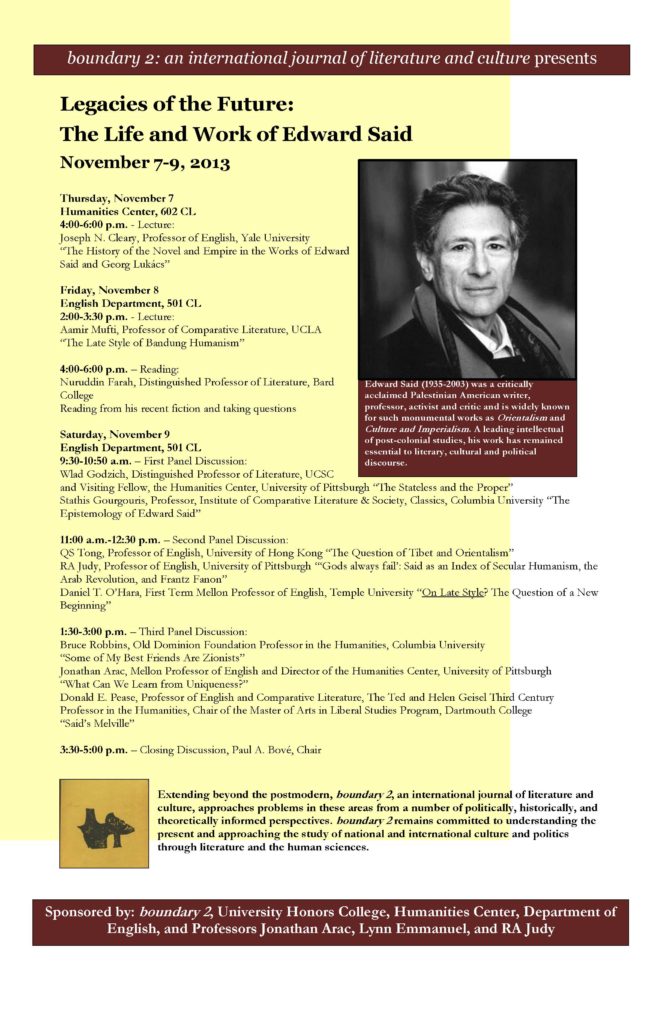

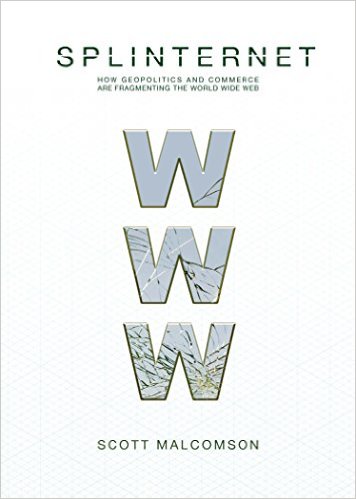


 As this poetic quote by Sarah Josepha Hale, nineteenth-century author and influential editor reminds us, context is everything. The challenge, if we wish to write women back into history via Wikipedia, is to figure out how to shift the frame of references so that our stars can shine, since the problem of who precisely is “worthy of commemoration” or in Wikipedia language, who is deemed
As this poetic quote by Sarah Josepha Hale, nineteenth-century author and influential editor reminds us, context is everything. The challenge, if we wish to write women back into history via Wikipedia, is to figure out how to shift the frame of references so that our stars can shine, since the problem of who precisely is “worthy of commemoration” or in Wikipedia language, who is deemed  mes of prosopography published during what might be termed the heyday of the genre, 1830-1940, when the rise of the middle class and increased literacy combined with relatively cheap production of books to make such volumes both practicable and popular. Booth also points out, that lest we consign the genre to the realm of mere curiosity, predating the invention of “women’s history” the compilers, editrixes or authors of these volumes considered them a contribution to “national history” and indeed Booth concludes that the volumes were “indispensable aids in the formation of nationhood.”
mes of prosopography published during what might be termed the heyday of the genre, 1830-1940, when the rise of the middle class and increased literacy combined with relatively cheap production of books to make such volumes both practicable and popular. Booth also points out, that lest we consign the genre to the realm of mere curiosity, predating the invention of “women’s history” the compilers, editrixes or authors of these volumes considered them a contribution to “national history” and indeed Booth concludes that the volumes were “indispensable aids in the formation of nationhood.”